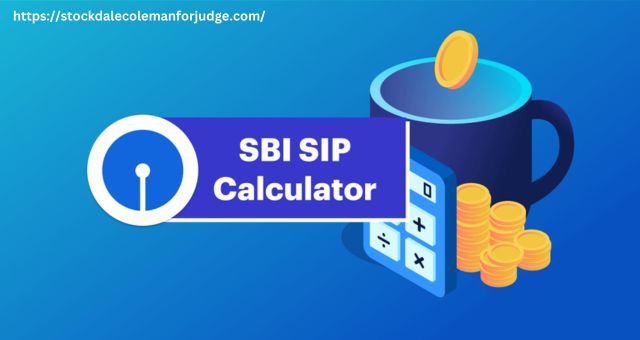Beyond the Fibers: Deciphering Your Asbestos Report for Safety and Compliance

The simple expression of the word ‘asbestos’ frequently sends shudders down the spines of property holders, land engineers, and industry experts the same. Known for its intensity opposition, elasticity, and protecting properties, this normally happening mineral has a more obscure side. Long haul openness to asbestos-loaded air can create a few respiratory issues, including asbestosis, cellular breakdown in the lungs, and even mesothelioma. Thusly, the guidelines around its utilization and evacuation are rigid and complex.
For any building renovation or demolition process, understanding and interpreting an asbestos report is crucial. It forms the bedrock of your approach towards ensuring safety and compliance. However, these reports are seldom laid out with the layman in mind, often inundating the reader with legal language, scientific jargon, and a barrage of acronyms.
In this extensive guide, we’ll break down the components of an asbestos report, demystify its content, and equip you with the knowledge to make informed decisions for the protection of public health and the environment.
The Significance of an Asbestos Report
An asbestos report is not just another technical document to add to your project file. It’s a vital piece of information bearing implications for personal health, regulatory adherence, and economic considerations. Here’s why it matters:
Protecting Health
At its center, the asbestos report is an immediate channel of correspondence from natural specialists to you. It illuminates about the presence, area, and state of asbestos-containing materials (ACMs) in a given construction. It likewise recommends important insurances to sidestep the arrival of asbestos strands, which are generally innocuous when contained. This deliberate methodology defends the strength of laborers, tenants, and the local area close to the site.
Legal and Regulatory Perspective
In the realm of construction, regulations dictate the handling of ACMs with an iron fist. The report’s discoveries lead to a game plan that consents to the Word related Security and Wellbeing Organization (OSHA), the Natural Insurance Office (EPA), and state-explicit commands. A report can spell the contrast between a consistent legitimate cycle and one buried in difficulties and likely fines.
Financial Impact
Needless to say, the discovery of asbestos can dramatically affect project timelines and budgets. A report outlining the controlled and safe removal of ACMs empowers stakeholders to plan strategically, accounting for proper abatement processes and the associated costs.
Major Components of an Asbestos Report
The first glance at an asbestos report may leave you bewildered. Delving deeper, you’ll discover a structured compilation of information serving diverse purposes.
Executive Summary
This section provides a succinct overview of the entire report. It encapsulates the key elements – the presence and extent of asbestos, proposed action, and conditions of the material. It acts as a briefing tool for stakeholders who require a distilled version of the full document.
Report of Survey
Here, the surveyor details the process undertaken for asbestos identification. It includes the methods used, the extent of the investigation, and any limitations encountered during the survey. This forms a crucial part of the historical record, particularly for older buildings where repeated surveys may be necessary.
Bulk Samples and Laboratory Analysis
The heart of the report lies within the findings of laboratory analyses – the testing of suspected materials taken as ‘bulk’ samples. The report will specify the type of asbestos found (if any), its concentration within the sample, and whether its friability poses a risk.
Condition Assessment
This part evaluates the physical condition of the ACMs. Intact and in good condition materials pose a lesser threat as they do not release fibers. However, coating disturbance and damage can elevate the risk and require immediate management.
Risk Evaluation and Management
Qualifying and quantifying risks is critical. The Risk Evaluation section assigns a risk score to ACMs considering factors such as location, condition, and friability. Following this, a plan of management outlines operations, maintenance, removal, and encapsulation strategies, ensuring risks are mitigated.
Available Information
The availability of information, typically collated under the “document review” section, ranges from building plans that may hint at ACM locations to historical data of previous asbestos-related activities. This breadth adds context to the risk assessment and strategies moving forward.
Interpreting the Language of the Asbestos Report
Understanding Survey Methodologies
The survey methodology adopted greatly influences the thoroughness and the findings within the report. The oldest approach, the presumptive method, involves assuming certain materials as asbestos based on their date of installation. The more invasive ‘destructive’ surveys, on the other hand, include methods like bulk removal for better sample representation. Understanding the method used is critical to gauge the level of certainty in the findings.
Deciphering Sampling Results
Results can be founded upon polarized light microscopy (PLM) analysis or more advanced techniques like transmission electron microscopy (TEM). Sample analysis will be reported in terms of presence (%), type, and concentration (fibers per square centimeter) of asbestos. Accurate interpretation hinges on being able to differentiate chrysotile (the most common form), amosite, and crocidolite, often referred to as ‘white,’ ‘brown,’ and ‘blue,’ respectively.
Condition Determination
Condition assessment language is consistent, typically using a hierarchy that ranges from ‘good,’ ‘impaired,’ ‘significantly damaged,’ and ‘deteriorated.’ These judgments inform the level of urgency in addressing the material, with ‘significantly damaged’ and ‘deteriorated’ often requiring immediate action.
Comprehending Risk Scores
A report with a risk evaluation matrix can seem like a simple heatmap of red, yellow, and green. However, these scores are the product of intricate factors, including fiber release potential, accessibility, and occupancy, giving a precise indication of the risk level, needing different urgency levels in the management program.
Management Recommendations
This is the ‘action items’ section of the report. It suggests a bevy of interventions, typically in the ascending order of containment, repair, removal, and encapsulation. The rationale behind each choice is elucidated, providing the reader a strategic thought process in managing ACMs.
Document Review and Recommendations
The provided section gathers all available records that may corroborate or refute the asbestos presence claims. Recommendations such as further surveying or periodic re-evaluations hinge on this ‘meta’ analysis of the building’s history and existing knowledge base.
Best Practices for Post-Report Action
With the report in hand, the time for decisive action is ripe. How should you approach the next steps to ensure compliance and safety?
Collaboration is Key
A cross-functional group encompassing legal, environmental, and building sciences professionals should collaborate. Each brings a unique aspect to the table, aiding in sound decision-making.
Prioritize Risk Management
The report presents a clear matrix of risks. It must guide the priority and type of interventions. Urgency is paramount, particularly with high-risk scores that demand immediate management.
Regular Re-Evaluations
The building’s condition is dynamic. Periodic re-evaluations are essential, especially post-intervention, to update and revise the management plan. These assessments maintain the accuracy and effectiveness of the report’s recommendations.
Stay in Tune with Regulatory Changes
Compliance is a moving target. Regular updates on federal and state asbestos regulations are indispensable. Changes might render previous actions or reports outdated, necessitating swift adaptations.
Educate and Inform Stakeholders
From contractors to the end-users, stakeholders need to be informed about the report’s findings and the corresponding actions. Education breeds awareness, and awareness leads to a culture of safety.
Conclusion
Interpreting an asbestos report can be a daunting task, but the stakes dictate that the effort invested is worthwhile. It is a testament to shared responsibility – between the occupiers, building managers, and the report’s authors – to ensure public health is not under threat. By dissecting the report’s sections, valuing its content, and proceeding with calculated and responsible action, we uphold the integrity of the structure and, most importantly, protect the lives that thrive within its confines. The language may be technical, but the message is clear – safety comes first, always.












